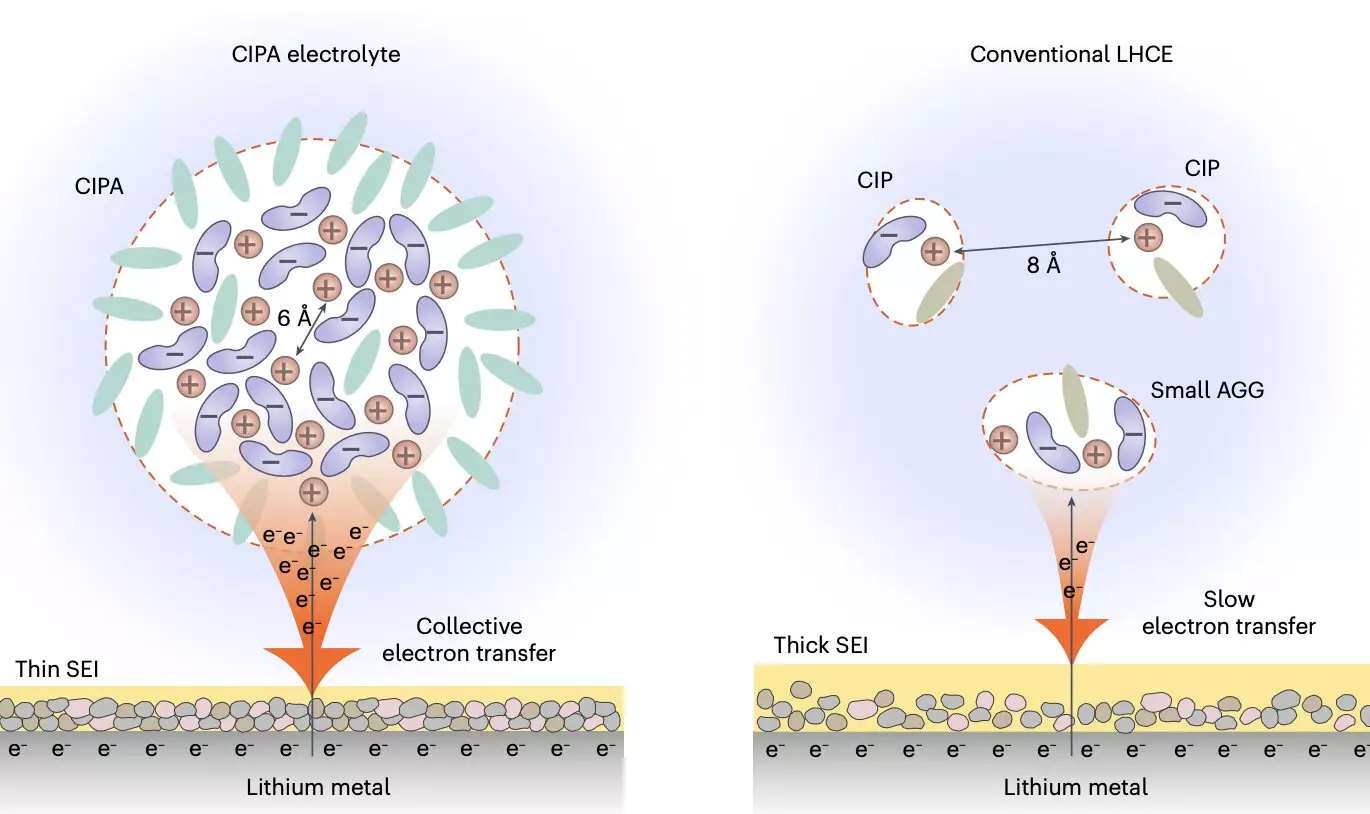The quest for higher energy densities in batteries has led researchers to explore the potential of lithium-metal batteries as an alternative to the widely used lithium-ion batteries. While lithium-metal batteries offer the promise of significantly higher energy densities, they have been plagued by issues such as short lifespans due to the growth of lithium dendrites and the degradation of the electrolyte. Recently, a team of researchers from the University of Science and Technology of China introduced a new electrolyte design in a paper published in Nature Energy, which could pave the way for the development of lithium-metal pouch cells with longer lifespans.
The Challenge of Short Lifespans
One of the primary challenges with lithium-metal batteries introduced to date is their limited cycle life of approximately 50 cycles, compared to the 1,000 cycles typically seen in commercial lithium-ion batteries. The growth of lithium dendrites, the high reactivity of lithium-metal, and the degradation of the electrolyte have all contributed to this issue. Despite efforts by researchers around the world, the performance of lithium-metal batteries has not yet reached the desired level of over 500 Wh/kg and 1,000 cycles.
Approximately five years ago, Prof. Shuhong Jiao and her colleagues developed an electrolyte that could stabilize the interfaces between the anode-electrolyte and cathode-electrolyte in lithium-metal battery cells. This electrolyte design aimed to suppress the degradation of the electrolyte by leveraging knowledge of microscopic physicochemical processes within lithium-metal batteries. By utilizing affordable components and drawing inspiration from other electrolyte designs, the team was able to create a unique electrolyte that could extend the lifespan of lithium-metal batteries.
The solvation structure of an electrolyte plays a crucial role in governing the interfacial behavior of the electrolyte and ultimately determining the battery’s performance. Prof. Jiao and her team focused on tuning the solvation structure at the mesoscopic level, particularly on the interaction between ion pairs that form the electrolyte’s aggregate structure. Their electrolyte design featured large compact aggregates known as Compact Ion-Pair Aggregates (CIPA), which differed from the small aggregates typically found in other leading electrolyte designs.
A Breakthrough in Battery Performance
The new electrolyte design introduced by the research team exhibited a collective reduction on the lithium-metal anode, leading to the rapid decomposition of anions on the surface of the lithium. This decomposition forms a thin and stable Solid Electrolyte Interface (SEI), which suppresses the ongoing degradation of the electrolyte. The electrolyte also demonstrated good oxidative stability and reduced the dissolution of transition metal elements from the cathode, contributing to the stability of both the anode and cathode interfaces.
Potential for Commercialization
In initial tests, the researchers used the newly designed electrolyte to create a lithium-metal pouch cell with an energy density of 500 Wh/kg. This cell retained 91% of its energy after 130 cycles, showcasing the potential for extended cycle life. The team is now looking to further improve the cycle life of these cells to more than 1,000 cycles, while also exploring the possibility of achieving even higher energy densities up to 600 Wh/kg with 100-200 cycles. The breakthrough in electrolyte design opens up new possibilities for the future of lithium-metal batteries and their potential applications in various industries.


Leave a Reply